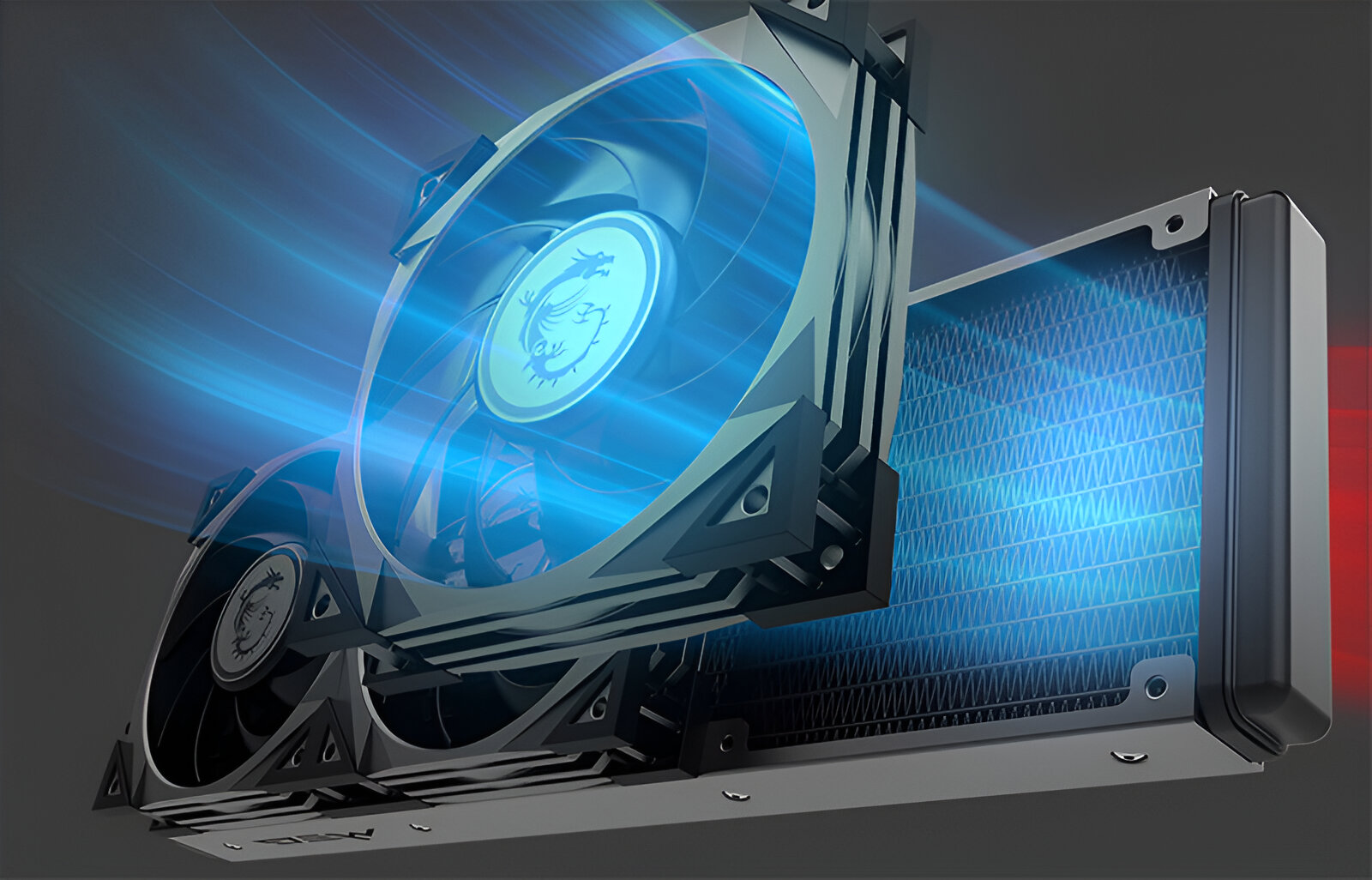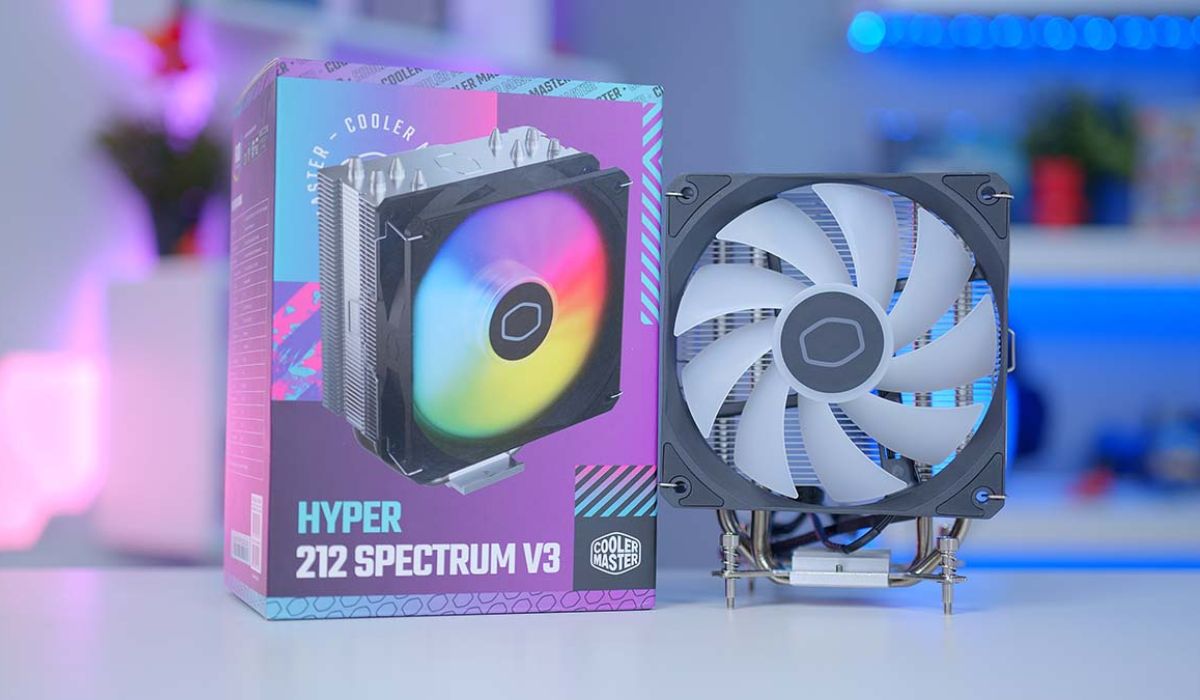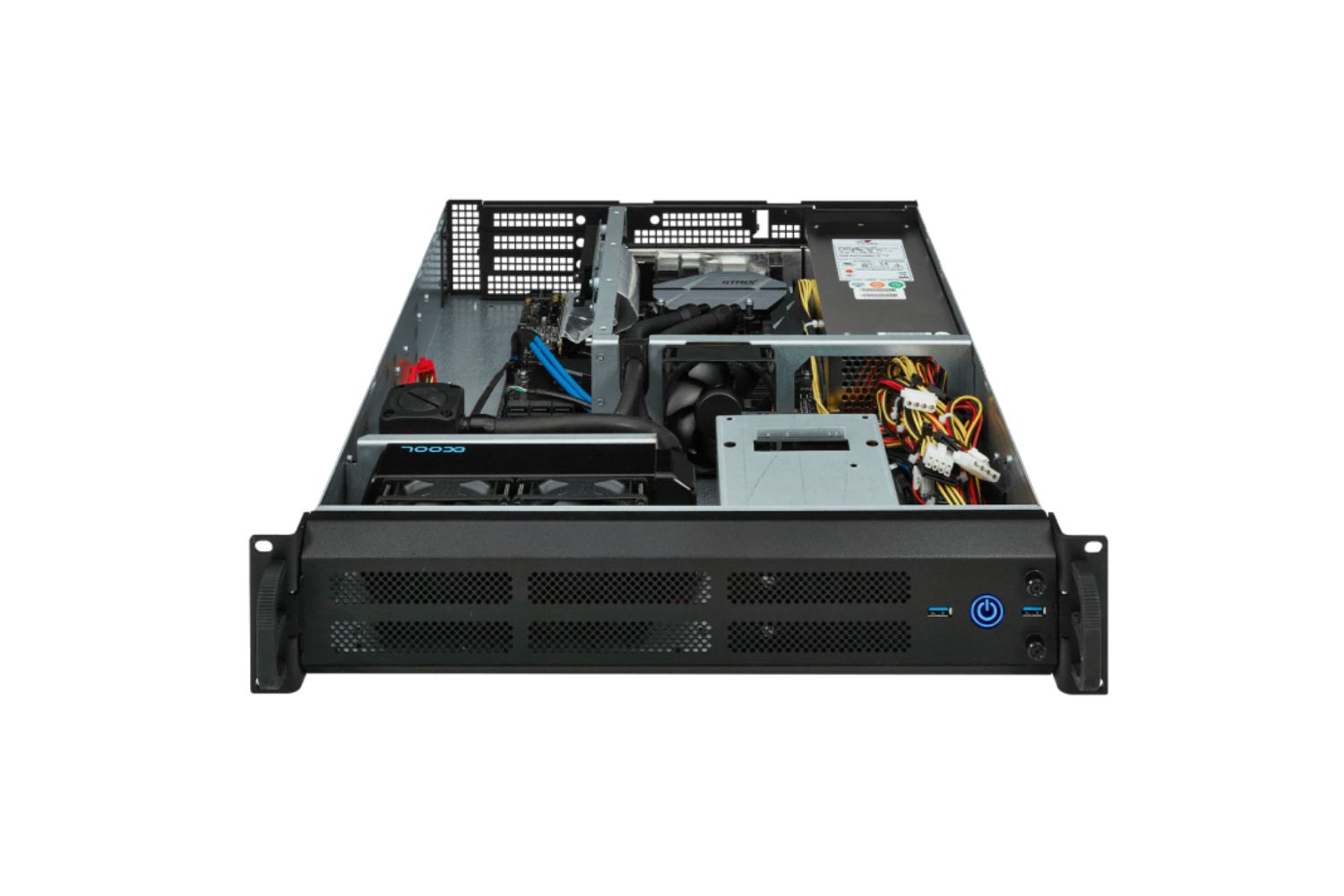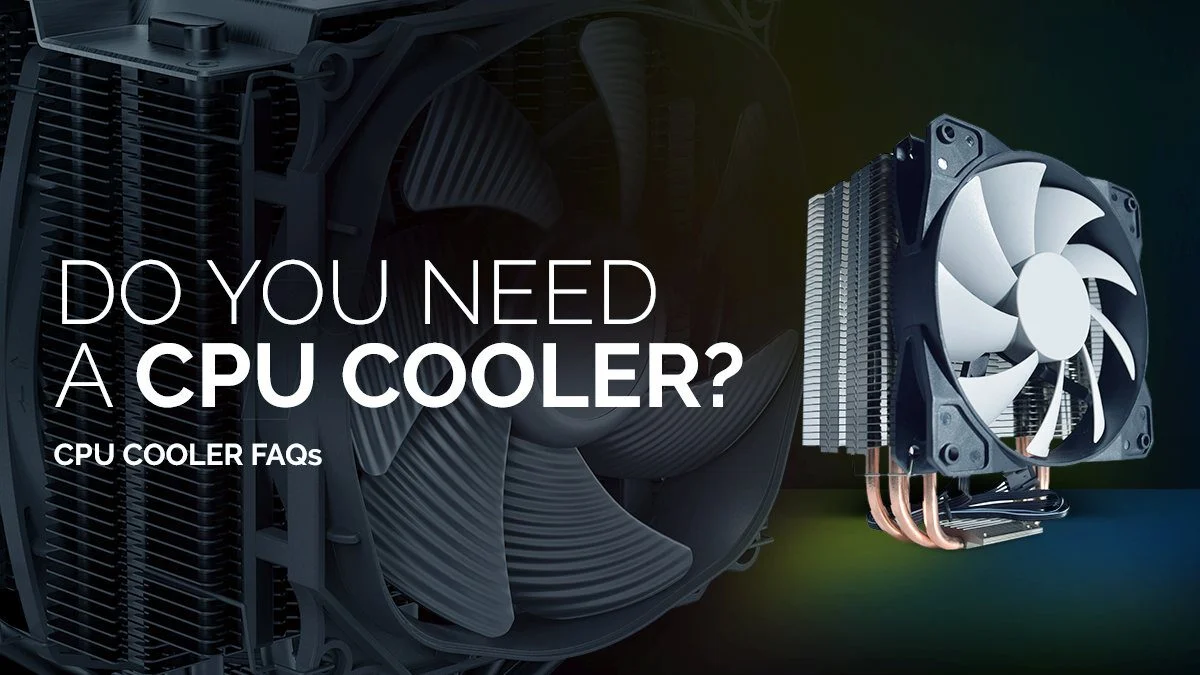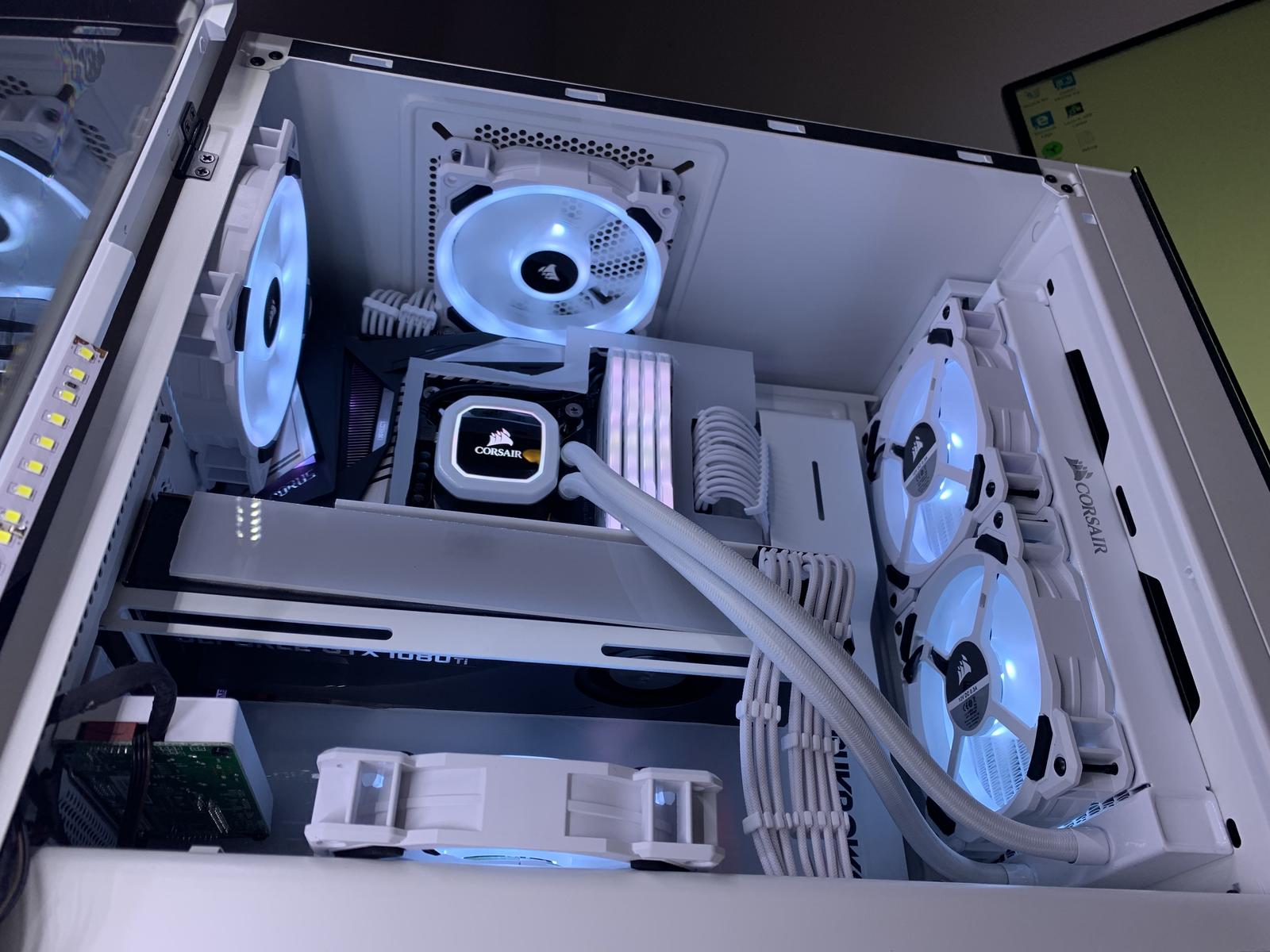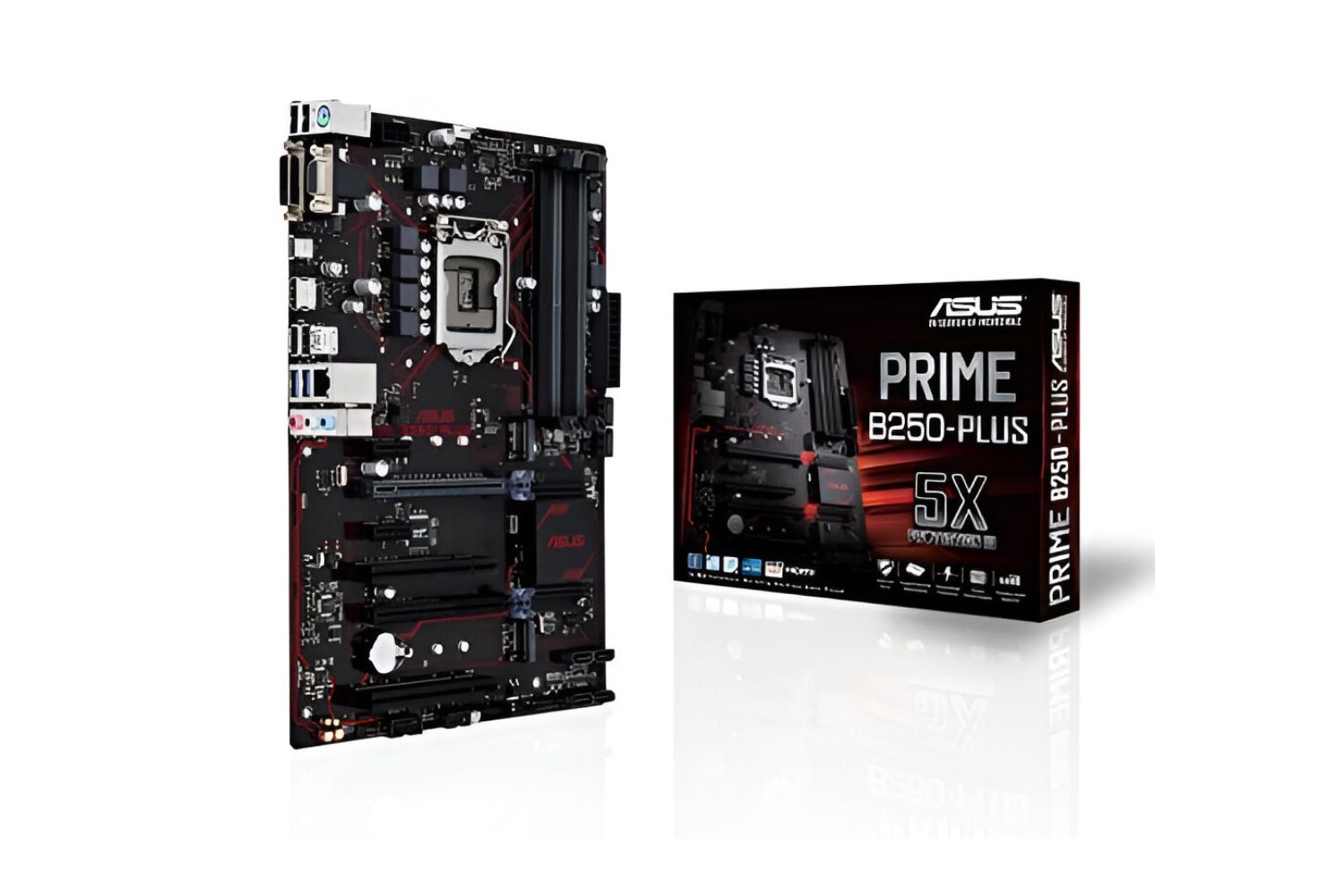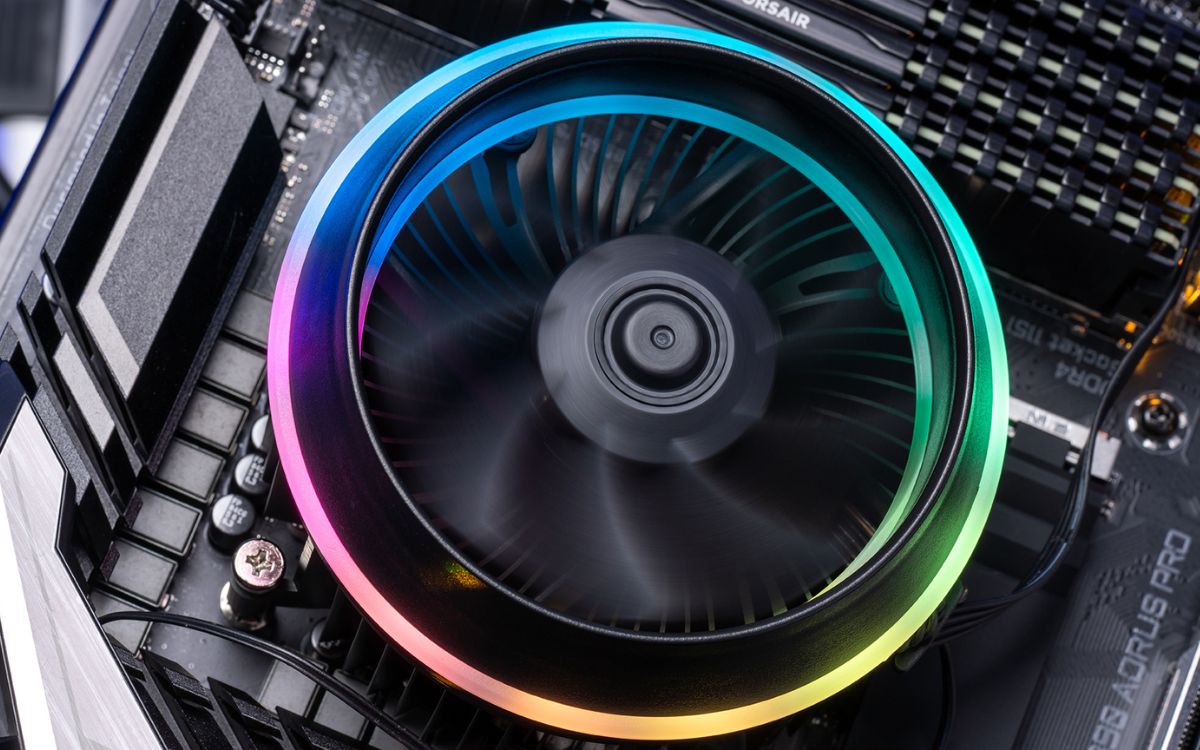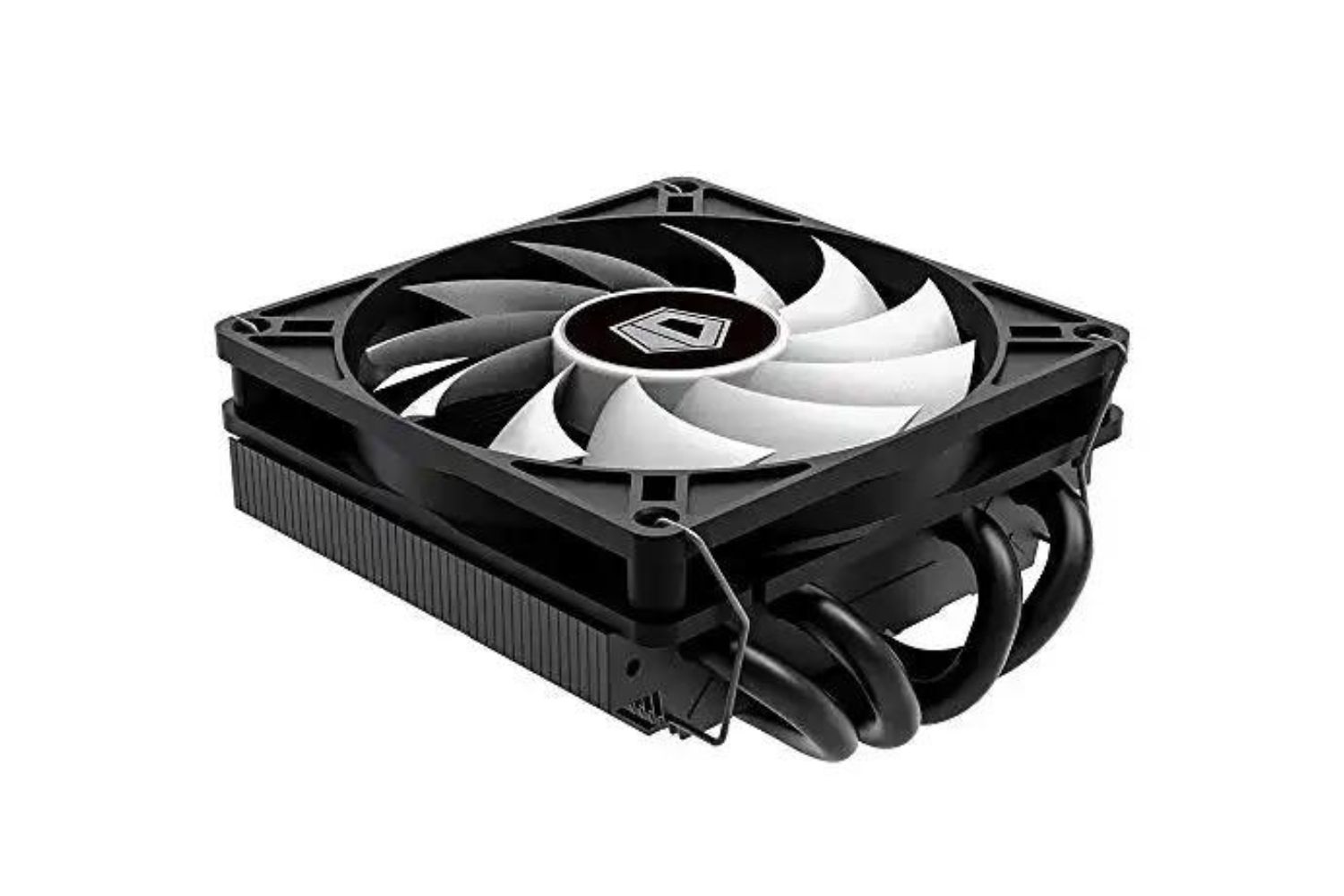Introduction
In the world of personal computing, a CPU (Central Processing Unit) is the heart and brain of any computer system. It handles all the calculations, processes, and tasks required to run applications and operate the system smoothly. However, the CPU generates a significant amount of heat during operation, which can lead to performance issues and even hardware damage if not managed properly. This is where a CPU cooler comes into play.
A CPU cooler is a crucial component that ensures the temperature of the CPU remains within safe limits by dissipating the heat generated. It consists of a heatsink, which absorbs the heat, and a fan or liquid cooling system that helps in removing it efficiently. Choosing the right CPU cooler is essential to maintain the longevity and performance of your computer.
With a plethora of options available in the market, selecting the right CPU cooler can be a daunting task. There are various factors to consider, such as cooling performance, noise levels, size compatibility, and budget constraints. In this article, we will guide you through the process of choosing the ideal CPU cooler for your system.
By understanding the different types of CPU coolers, their advantages and disadvantages, and the specific factors to consider, you can make an informed decision and ensure proper cooling for your CPU. So, let’s dive into the world of CPU coolers and discover what you need to know before making your selection.
Factors to consider when choosing a CPU cooler
When selecting a CPU cooler, there are several important factors that you should consider to ensure optimal performance and compatibility with your system. Let’s explore these factors in detail:
1. Cooling Performance: The primary function of a CPU cooler is to keep the temperature of the CPU within safe limits. It’s crucial to choose a cooler that can efficiently dissipate heat and maintain low temperature levels even during intense computing tasks.
2. Noise Levels: CPU coolers can generate considerable noise, especially those equipped with high-speed fans. If you value a quiet computing experience, consider a cooler with a low noise rating. Look for models that offer a good balance between cooling performance and noise output.
3. Size Compatibility: CPU coolers come in various sizes, from compact low-profile coolers to larger tower-style coolers. Consider the available space in your computer case and ensure that the cooler you choose fits without obstructing other components such as RAM modules or the graphics card.
4. Air Cooler vs. Liquid Cooler: Air coolers use a heatsink and fan setup to dissipate heat, while liquid coolers utilize a pump and radiator system. Air coolers are generally more affordable and easier to install, while liquid coolers offer better cooling performance and are suitable for overclocking.
5. TDP (Thermal Design Power): The TDP rating of your CPU refers to the maximum amount of heat it can generate under normal operation. Ensure that the CPU cooler you choose has a TDP rating that matches or exceeds your CPU’s TDP to ensure efficient cooling.
6. Overclocking Considerations: If you plan on overclocking your CPU to achieve higher performance, consider a CPU cooler that can handle the increased heat output. Look for coolers with larger heatsinks or liquid cooling systems designed for overclocking.
7. Cost and Value for Money: CPU coolers come in a wide range of prices, so it’s important to consider your budget. While higher-priced coolers often offer better cooling performance and quieter operation, there are also affordable options available that provide adequate cooling for non-demanding tasks.
8. Ease of Installation: Some CPU coolers can be quite challenging to install, especially liquid coolers that require extensive mounting and tubing arrangements. Consider your technical expertise and choose a cooler that offers a straightforward installation process.
Keeping these factors in mind when choosing a CPU cooler will help ensure that you select the right one for your needs and provide your CPU with optimal cooling performance, longevity, and stability.
Air Cooler vs. Liquid Cooler
When it comes to CPU coolers, there are two main types to choose from: air coolers and liquid coolers. Each type has its benefits and drawbacks, so it’s important to understand the differences before making a decision.
Air Coolers:
Air coolers are the most common type of CPU coolers and consist of a metal heatsink and a fan. The heatsink draws heat away from the CPU and transfers it to the surrounding air, while the fan helps in dissipating the heat rapidly. Air coolers are generally more affordable, easy to install, and require minimal maintenance.
One of the main advantages of air coolers is their reliability. Since they have fewer moving parts, there is less chance of failure compared to liquid coolers. Air coolers also provide a sufficient level of cooling for most CPUs, making them a popular choice for casual users and gamers.
However, air coolers can be bulky and may obstruct other components in your system, such as RAM slots or tall heatsinks on the motherboard. They also tend to generate more noise compared to liquid coolers, especially if you opt for models with high-speed fans. Additionally, air coolers are usually limited in terms of overclocking potential, as they may struggle to cope with the increased heat output.
Liquid Coolers:
Liquid coolers, also known as all-in-one (AIO) coolers, use a closed-loop system that consists of a pump, radiator, tubing, and a liquid coolant. The pump circulates the liquid coolant, which absorbs heat from the CPU and carries it to the radiator where it is dissipated by fans. Liquid coolers excel in providing efficient cooling, especially for high-end CPUs and heavy overclocking.
The main advantage of liquid coolers is their superior cooling performance. The liquid coolant has a higher heat capacity, allowing for more effective heat dissipation. Liquid coolers are also more compact and offer better compatibility with RAM modules and other components. Additionally, they tend to produce less noise compared to air coolers, thanks to larger and slower-spinning fans.
However, liquid coolers are generally more expensive than air coolers, making them a premium choice for enthusiasts and professionals. They also have a more complex installation process, involving mounting the radiator, connecting the tubing, and ensuring proper liquid flow. Maintenance may be required over time to prevent leakage or pump failure.
Ultimately, the choice between air coolers and liquid coolers depends on your specific needs and requirements. If you’re looking for a budget-friendly and reliable cooling option, an air cooler may be sufficient. On the other hand, if you demand maximum cooling potential for heavy workloads or overclocking, a liquid cooler is worth considering.
CPU Cooler Size and Compatibility
When choosing a CPU cooler, it is crucial to consider its size and compatibility with your computer system. CPU coolers come in various sizes and designs, and selecting the right one ensures proper fitment and optimal cooling performance. Here are some important factors to consider regarding CPU cooler size and compatibility:
1. Form Factor: CPU coolers are available in different form factors, such as low-profile, tower-style, and all-in-one liquid coolers. The form factor you choose depends on the available space in your computer case and the cooling requirements of your CPU.
2. Socket Compatibility: CPU coolers are designed to fit specific CPU sockets. The most common CPU socket types are Intel’s LGA and AMD’s AM4. Ensure that the cooler you choose is compatible with your CPU’s socket to ensure proper mounting and cooling efficiency.
3. Height Clearance: Tower-style air coolers often have a large heatsink and fan assembly, which can obstruct other components, such as RAM modules or the side panel of your computer case. Before purchasing a CPU cooler, check the height clearance in your case to ensure it can fit without any clearance issues.
4. RAM Clearance: Some CPU coolers have a tall heatsink that can interfere with high-profile RAM modules, especially those with large heatspreaders or RGB lighting. Make sure to check the RAM clearance specifications of the cooler to ensure compatibility with your RAM configuration.
5. Graphics Card Clearance: In certain cases, a large CPU cooler can overlap with the space required for your graphics card. This can limit the size of the graphics card you can install or cause clearance issues. Consider the dimensions of your CPU cooler and the available space for the graphics card to avoid any conflicts.
6. Case Compatibility: Ensure that the CPU cooler you choose is compatible with the form factor of your computer case. Some smaller or mini-ITX cases might have limitations on the size or height of the CPU cooler that can be installed.
7. Power Delivery Component Clearance: Depending on the motherboard or the arrangement of power delivery components around the CPU socket, some CPU coolers might have limited compatibility. Verify that the cooler you choose does not obstruct any power delivery components near the CPU socket.
It is essential to carefully review the specifications and measurements of the CPU cooler you intend to purchase to ensure maximum compatibility with your specific computer system. This diligence ensures proper fitment, avoids compatibility issues, and guarantees optimal cooling performance for your CPU.
Noise Levels and Cooling Efficiency
When selecting a CPU cooler, it is important to consider both the noise levels and cooling efficiency to ensure a balance between a quiet system and optimal cooling performance. Let’s explore the relationship between noise levels and cooling efficiency and how you can choose a CPU cooler that meets your preferences:
Noise Levels:
Noise levels of a CPU cooler are measured in decibels (dB). Lower dB values indicate quieter operation, while higher dB values indicate louder operation. Coolers with larger fans or higher fan speeds tend to produce more noise compared to smaller or slower-spinning fans.
If you value a quiet computing environment, opt for a CPU cooler that has a low noise rating. Many manufacturers provide noise level specifications for their coolers, allowing you to make an informed decision. Consider coolers with features like fan speed control or PWM (Pulse Width Modulation) support, which allow you to fine-tune fan speeds and noise levels according to your needs.
Cooling Efficiency:
The cooling efficiency of a CPU cooler is determined by its ability to maintain low temperatures under various load conditions. It is measured by its thermal conductivity, heat dissipation capabilities, and overall design.
CPU coolers with larger heatsinks and more heat pipes tend to have better cooling efficiency as they can absorb and dissipate more heat. Liquid coolers, especially those with larger radiators and efficient pumps, also excel in cooling efficiency. Higher-end coolers often feature advanced designs and technologies like vapor chambers or hybrid cooling systems, further enhancing their cooling efficiency.
Choosing the Right Balance:
It is important to strike a balance between noise levels and cooling efficiency based on your specific needs and preferences.
If you prioritize a quiet computing experience and are not engaged in heavy tasks like gaming or video editing, a cooler with lower noise levels may be more suitable for you. Look for coolers that have larger and slower-spinning fans, fan noise reduction technologies, or even passive cooling options like fanless coolers.
On the other hand, if you use your computer for resource-intensive tasks or plan to overclock your CPU, prioritizing cooling efficiency is crucial. Look for coolers that have a good balance between cooling performance and noise levels. Consider liquid coolers with larger radiators or high-performance air coolers with larger heatsinks and efficient fan designs.
Reading reviews and user feedback can provide valuable insights into the real-world performance of CPU coolers in terms of both noise levels and cooling efficiency. By considering your specific requirements and finding a cooler that strikes the right balance, you can ensure both a quiet and cool computing experience.
Different Types of CPU Coolers
There are various types of CPU coolers available in the market, each with its own design, cooling mechanism, and advantages. Understanding the different types can help you make an informed decision when choosing a CPU cooler. Let’s explore the various types of CPU coolers:
1. Air Coolers:
Air coolers are the most common and traditional type of CPU coolers. They consist of a heatsink, made of metal fins, and one or more fans. The heatsink absorbs heat from the CPU and the fan(s) help in dissipating the heat by blowing air over the fins. Air coolers are known for their reliability, affordability, and ease of installation. They offer sufficient cooling for most CPUs, especially for non-overclocked systems or casual users.
2. All-in-One (AIO) Liquid Coolers:
All-in-One (AIO) liquid coolers provide more advanced cooling than air coolers. They consist of a pump, a liquid coolant, tubing, and a radiator with fans. The pump circulates the liquid coolant, which absorbs heat from the CPU, and carries it to the radiator. The fans then dissipate the heat from the radiator. AIO liquid coolers offer better cooling performance, especially for high-end CPUs, heavy workloads, or overclocking. They also tend to produce less noise compared to air coolers and offer more flexibility in terms of installation and compatibility.
3. Custom Liquid Cooling Systems:
Custom liquid cooling systems offer the highest level of cooling performance and customization. These systems require assembling various components, including a pump, reservoir, tubing, water blocks, and radiators. Custom liquid cooling systems provide excellent cooling efficiency and are often used by enthusiasts, overclockers, and professionals. However, these systems are more complex to set up, more expensive, and require regular maintenance. They offer the most potential for customization in terms of cooling capacity, aesthetics, and component compatibility.
4. Low-Profile Coolers:
Low-profile coolers are designed for smaller form factor systems, such as mini-ITX builds or slim cases, where space is limited. These coolers have a compact design that allows them to fit in tight spaces. They often use a combination of heat pipes and small-profile fans to provide adequate cooling within the limited space available. While low-profile coolers may not offer the same cooling performance as larger coolers, they are a great choice for compact systems with less demanding cooling needs.
5. Passive Coolers:
Passive coolers operate without any fans or moving parts. They rely solely on heatsinks and heat pipes to dissipate the heat passively. Passive coolers are known for their silent operation and reliability, as they have no fan that can potentially fail. However, they are not as effective as active cooling solutions and are mainly suitable for low-power CPUs or systems with low heat generation. Passive coolers are often used in media center PCs or noise-sensitive environments where silence is a top priority.
Understanding the different types of CPU coolers can help you narrow down your options and choose the one that best suits your specific needs in terms of cooling performance, noise levels, system size, and budget.
Thermal Design Power (TDP) and Overclocking Considerations
Thermal Design Power (TDP) is a crucial specification to consider when choosing a CPU cooler, especially if you plan on overclocking your processor. TDP refers to the maximum amount of heat that a CPU generates under normal operating conditions. Understanding TDP and its relationship to overclocking can help you select a suitable CPU cooler. Let’s dive into the details:
1. TDP and Cooling Capacity:
When selecting a CPU cooler, it is important to ensure that its cooling capacity matches or exceeds the TDP of your CPU. A cooler with a higher TDP rating can effectively dissipate the heat generated by a higher TDP CPU, keeping the temperature within safe limits. Choosing a cooler with insufficient cooling capacity can result in thermal throttling, reduced performance, and even potential hardware damage.
2. Overclocking and Increased TDP:
Overclocking involves running your CPU at a higher clock speed than its default settings to achieve increased performance. However, overclocking also increases the TDP of the CPU, as it generates more heat. When planning to overclock your CPU, it is crucial to choose a CPU cooler capable of handling the additional heat output. You may need a cooler with a higher TDP rating or better cooling performance to maintain stable temperatures during overclocked operation.
3. Cooling Performance and Overclocking Potential:
Efficient cooling plays a significant role in achieving higher overclocking potential. A CPU cooler with better cooling performance can keep the temperatures lower, allowing for more stable and higher overclocks. Liquid coolers, with larger radiators and advanced cooling technologies, often offer better cooling efficiency and are suitable for heavy overclocking. Air coolers with larger heatsinks and high-performance fan designs can also provide adequate cooling for moderate overclocking.
4. Cooling Solutions for Extreme Overclocking:
For extreme overclocking enthusiasts, who push their CPUs to the absolute limits, specialized cooling solutions like high-end custom liquid cooling setups may be necessary. These custom systems often feature larger radiators, multiple fans, and efficient pumps to handle the substantial heat output during extreme overclocking. They provide the best cooling performance and stability for such scenarios, but they come at a higher cost and require advanced knowledge and maintenance.
5. Factors Beyond CPU Coolers:
It is important to note that CPU coolers are not the only factor affecting overclocking potential. Other factors like the quality of the CPU’s silicon, motherboard’s power delivery, and system airflow also play a role. Ensuring proper system ventilation, using high-quality thermal paste, and maintaining a favorable ambient temperature can further enhance cooling efficiency and overclocking capabilities.
By considering the TDP of your CPU, choosing a suitable CPU cooler with a higher TDP rating, and selecting a cooling solution with adequate cooling capacity, you can maintain stable temperatures and unleash the full overclocking potential of your CPU.
Cost and Value for Money
When choosing a CPU cooler, the cost and value for money are important factors to consider. It’s essential to strike a balance between the cost of the cooler and the benefits it provides in terms of cooling performance, noise levels, durability, and compatibility with your system. Let’s delve into the considerations regarding cost and value when selecting a CPU cooler:
1. Budget Constraints:
Your budget is a significant factor when choosing a CPU cooler. Coolers vary in price, ranging from budget-friendly options to higher-end models with advanced features. It’s essential to define your budget range and explore coolers within that range to find the best value for money.
2. Cooling Performance vs. Cost:
Consider the cooling performance you require for your specific needs. If you have a high-performance CPU or you engage in demanding tasks like gaming or video editing, it may be worth investing in a cooler with better cooling efficiency, even if it comes at a higher cost. On the other hand, if you have a lower-power CPU or perform lighter tasks, a more affordable cooler with adequate cooling capacity may suffice.
3. Noise Levels and Aesthetics:
CPU coolers can vary in terms of noise levels and aesthetics. More expensive options often include features like low-noise fans, fan speed control, or better overall acoustic design. If a quiet computing experience is crucial to you, it may be worth spending a bit more for a cooler that offers better noise reduction capabilities. Additionally, some coolers offer attractive designs, RGB lighting, or customization options, which may factor into your decision if aesthetics are important to you.
4. Durability and Longevity:
Consider the build quality and durability of the CPU cooler. Higher-end coolers often use better-quality materials and have a longer lifespan. These coolers may provide better value for money as they are likely to last longer and require less frequent replacement. It’s important to read reviews and consider the warranty period provided by the manufacturer to gauge the durability and value offered by the cooler.
5. Brand Reputation and Customer Reviews:
Research the reputation of the manufacturer and the specific cooler model you are considering. Established and reputable brands often provide reliable products with good customer support. Reading reviews and opinions from other users can give you insights into the real-world performance and value of the cooler.
6. Extra Features and Included Accessories:
Consider any additional features or accessories that may come with the cooler. Some coolers may include thermal paste, mounting hardware for various CPU sockets, or additional fan brackets. These extras can add value and convenience to your purchase.
Ultimately, the value for money when choosing a CPU cooler depends on your specific needs, priorities, and budget. It’s important to carefully weigh the cost against the features, cooling performance, longevity, and other factors to ensure you make a well-informed decision that suits your requirements.
Installation Process and Ease of Use
When selecting a CPU cooler, it is essential to consider the installation process and ease of use. A smooth and hassle-free installation experience ensures that the cooler is properly mounted, maximizing its cooling efficiency and preventing any potential damage to your CPU or motherboard. Let’s explore the importance of the installation process and ease of use when choosing a CPU cooler:
1. Compatibility and Mounting Mechanism:
Check the compatibility of the cooler with your CPU socket type. Each cooler is designed to fit specific CPU sockets (such as Intel’s LGA or AMD’s AM4), and it’s crucial to ensure that the cooler you choose supports your CPU. Additionally, consider the mounting mechanism of the cooler. Easy-to-use mounting systems that have clear instructions and require minimal tools can simplify the installation process.
2. Included Instructions and Documentation:
CPU coolers generally come with an installation manual or guide that provides step-by-step instructions on how to install the cooler properly. Clear and well-illustrated documentation can greatly assist in the installation process, especially for beginners. Make sure to review the instructions before installation to familiarize yourself with the process.
3. Pre-applied Thermal Paste or Included Thermal Compound:
Consider whether the CPU cooler comes with pre-applied thermal paste or includes a tube of thermal compound. Thermal paste is crucial to ensure proper heat transfer between the CPU and the cooler’s surface. Pre-applied thermal paste or an included tube can simplify the installation process, as you don’t need to purchase or apply it separately. However, if a cooler does not come with thermal paste, you will need to purchase it separately and apply it correctly during installation.
4. Accessibility and Clearances:
Consider the accessibility and clearances within your computer case when choosing a CPU cooler. Coolers with a compact design or low-profile coolers can be easier to install and offer more flexibility in terms of clearance around components such as RAM modules or the side panel of the case. Ensure that your case provides enough space for the chosen cooler and that there are no conflicts with other components.
5. Fan and Cable Management:
Consider the ease of fan and cable management during installation. Some coolers offer features like fan clips or brackets that simplify attaching or detaching fans for maintenance or cleaning. Additionally, check if the cooler has sufficient cable length or extensions to reach the motherboard’s fan headers without strain, ensuring a tidy and organized cable layout.
6. System Compatibility:
Ensure that the CPU cooler is compatible with other components in your system, such as the RAM modules, graphics card, or chipset heat sinks. Some coolers may obstruct these components or interfere with their installation or removal. It’s important to verify the compatibility and ensure that the chosen cooler fits without causing any clearance issues.
Considering the installation process and ease of use of a CPU cooler can save you time and frustration while ensuring proper installation and optimal cooling performance. Take the time to research and understand the installation requirements of the cooler you choose, and follow the instructions provided by the manufacturer to ensure a smooth and successful installation process.
Conclusion
Choosing the right CPU cooler is essential for maintaining optimal performance and longevity of your computer system. By considering various factors such as cooling performance, noise levels, size compatibility, and budget constraints, you can make an informed decision that suits your specific needs.
The type of CPU cooler you choose, whether it be an air cooler or a liquid cooler, depends on your requirements and preferences. Air coolers are reliable, affordable, and easy to install, while liquid coolers offer better cooling performance and are suitable for overclocking.
When selecting a CPU cooler, consider the size compatibility with your computer case and the available clearance for other components like RAM and graphics cards. Take into account noise levels and cooling efficiency, determining the balance between a quiet computing experience and optimal cooling performance.
Other considerations include the thermal design power (TDP) of your CPU and the cooling capacity of the cooler, especially when it comes to overclocking. The cost and value for money are also important factors to consider, balancing the price of the cooler with its features and benefits.
Additionally, evaluating the ease of installation and the process involved can save you time and frustration, ensuring a successful and efficient installation. It is crucial to choose a CPU cooler that is compatible with your CPU socket, providing a secure and proper mounting mechanism.
In conclusion, selecting the right CPU cooler requires careful consideration of several factors. By taking into account cooling performance, noise levels, size compatibility, budget constraints, ease of installation, and other relevant aspects, you can ensure that your CPU remains cool and efficient for optimal system performance. So, assess your needs, compare options, and make an informed decision to choose the best CPU cooler for your specific requirements.







